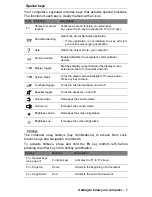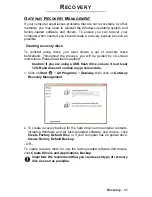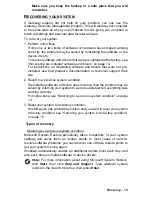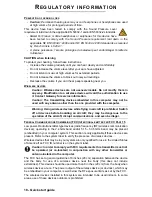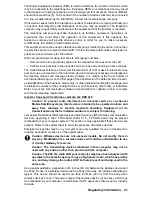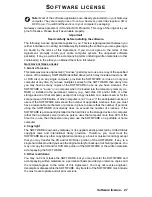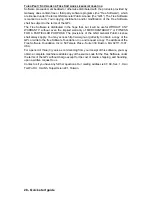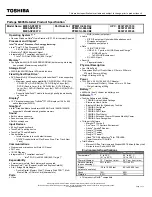
Regulatory information -
21
The Ringer Equivalence Number (REN) is used to determine the number of devices which
may be connected to the telephone line. Excessive RENs on a telephone line may result
in the devices not ringing in response to an incoming call. In most areas, the sum of RENs
should not exceed five (5). To be certain of the number of devices that may be connected
to a line, as determined by the total RENs, contact the local telephone company.
If this device causes harm to the telephone network, the telephone company will notify you
in advance that temporary discontinuance of service may be required. The telephone
company may request that you disconnect the equipment until the problem is resolved.
The telephone company may make changes in its facilities, equipment, operations, or
procedures that could affect the operation of this equipment. If this happens, the
telephone company will provide advance notice in order for you to make necessary
modifications to maintain uninterrupted service.
This equipment cannot be used on telephone company-provided coin service. Connection
to party line service is subject to state tariffs. Contact the state public utility commission or
public service commission for information.
When programming or making test calls to emergency numbers:
- Remain on the line and briefly explain to the dispatcher the reason for the call.
- Perform such activities in the off-peak hours such as early morning or late evenings.
The United States Telephone Consumer Protection Act of 1991 makes it unlawful for any
person to use a computer or other electronic device to send any message via a telephone
fax machine unless such message clearly contains, in a margin at the top or bottom of
each transmitted page or on the first page of the transmission, the date and time it is sent,
an identification of the business, other entity, or other individual sending the message, and
the telephone number of the sending machine or such business, other entity, or individual.
Refer to your fax communication software documentation for details on how to comply
with the fax-branding requirement.
I
NDUSTRY
C
ANADA
(IC) I
NTENTIONAL
EMITTER
PER
RSS 210
Caution:
To prevent radio interference to licensed service or co-channel
Mobile Satellite systems, this device is intended to be operated indoors and
away from windows to provide maximum shielding. Equipment (or its
transmit antenna) that is installed outdoors is subject to licensing.
Low power, Radio transmitter type devices (radio frequency (RF) wireless communication
devices), operating in the 2.4 GHz band and/or 5.15 – 5.35 GHz band, may be present
(embedded) in your computer system. This section is only applicable if these devices are
present. Refer to the system label to verify the presence of wireless devices.
Wireless devices that may be in your system are only qualified for use in Canada if an
Industry Canada ID number is on the system label.
Caution:
Wireless devices are not user-serviceable. Do not modify them in
any way. Modification to a wireless device will void the authorization to use
it. Contact Gateway for service.
Caution:
The transmitting device embedded in this computer may not be
used with any antenna other than provide with the computer.
Caution:
The 802.11a radio LAN your computer may have been equipped with
operates in the same frequency range as high power radar, which has priority
use, and may damage the radio LAN if both are present and being used in the
same area.
As a general guideline, a separation of 8 inches (20 cm) between the wireless device and
the body, for use of a wireless device near the body (this does not include extremities) is
typical. This device should be used more than 8 inches (20 cm) from the body when
wireless devices are on. The power output of the wireless device (or devices), which may
be embedded in your computer, is well below the RF exposure limits as set by Industry
Canada.

